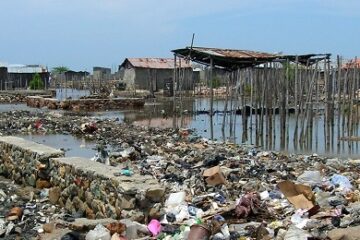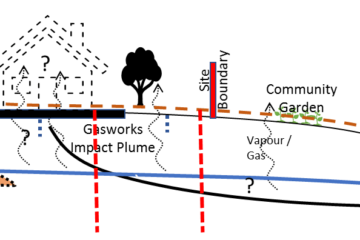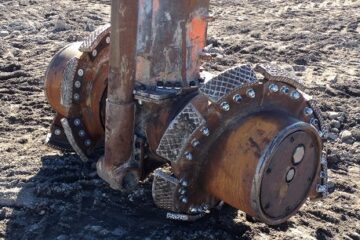Capping is common practice in landfill and can be a simple, effective solution to many contaminated land issues. Capping is, essentially, putting a lid on contaminated material, providing a barrier to the contaminated materials. Capping can be used for many reasons, to prevent access to people and removing the risks posed by contamination, to providing a barrier from the entry of rainfall or snow-melt and the exit of gases, odours, leachate or any other emissions which can be harmful to the environment.
The most important components of a capping system are the barrier (capping) layer and the drainage (however sometimes a gas collection system is required for putrefying materials). The barrier has to be of low-permeability such as a thick layer of dense clay, sometimes coupled with a geo-synthetic membrane, concrete or asphalt also makes an effective barrier layer. The drainage layer, on-top of the barrier, diverts the water away through low permeability soils such as sandy soils and/or gravels. A layer of vegetation, on a clay cap, can provide slope stability and act as an interceptor for some of the rainfall. If concrete or asphalt is used, managing the run off is essential to avoid flooding the surrounding area.
The main benefits of this type of solution are that it can be the most inexpensive method and it effectively blocks the pathway between contaminants and receptors. Capping layers can be transformed into an attractive feature in a short space of time by using the drainage layer to plant vegetation. The capping system design is easily adapted to suit different ground conditions, climates, budgets and natures of contaminants.
2021
Soil remediation guide
Approaching soil remediation without any prior knowledge can be difficult and uncomfortable at times, especially when it can potentially be very costly. This free eBook will help you understand the whats, the whys and the hows of soil remediation in the simplest terms.







Here at HBB GeoSales Ltd we have quite a bit of experience with supplying capping membranes for contaminated land applications.
We have supplied our Cover Up Reinforced HDPE membranes in large site specific sized pre-welded panels to a number of large regeneration projects within the UK and Europe.
The largest of these projects completed to date was Project Explore where we supplied 350 000m2 of our Cover Up 240 (0.4mm thick) as a temporary capping membrane.
The redevelopment of Project Explore was set over a 25 year timetable, for areas of the development which would not be completed within the near future it was decided a temporary cap would be deployed to prevent the ingress of surface water which would massively reduce the disposal cost of contaminated water.
Cover Up 240 was supplied in site specific sized pre-welded panels which significantly reduced the amount of onsite seams required.
Cover Up is suitable for temporary and final capping applications within both landfill and contaminated land. Cover Up is CE Certified.